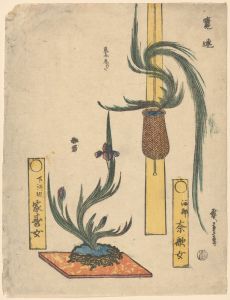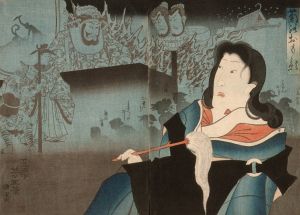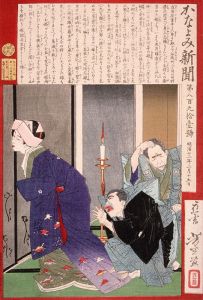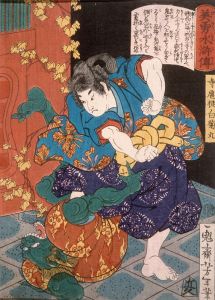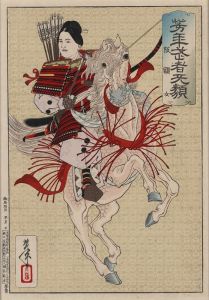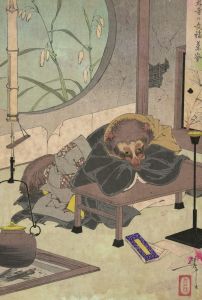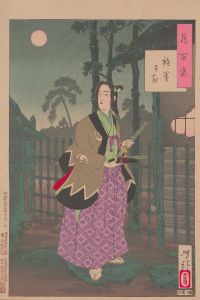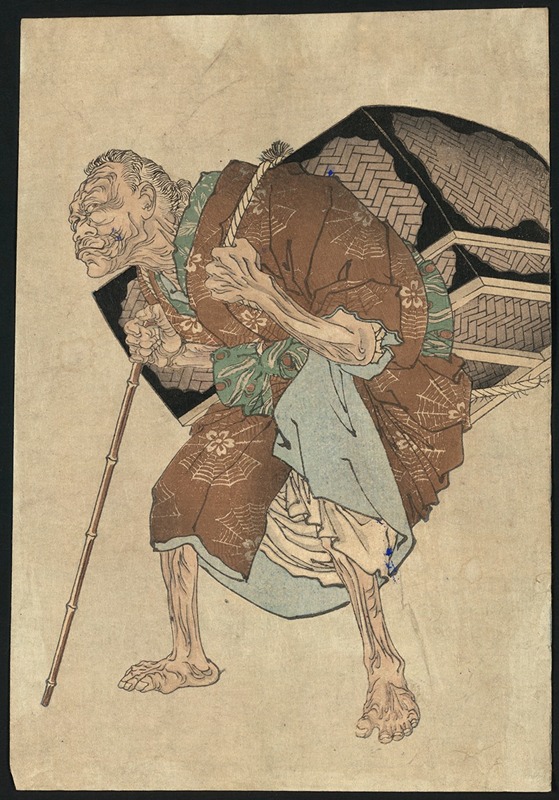
Shitakiri suzume
A hand-painted replica of Tsukioka Yoshitoshi’s masterpiece Shitakiri suzume, meticulously crafted by professional artists to capture the true essence of the original. Each piece is created with museum-quality canvas and rare mineral pigments, carefully painted by experienced artists with delicate brushstrokes and rich, layered colors to perfectly recreate the texture of the original artwork. Unlike machine-printed reproductions, this hand-painted version brings the painting to life, infused with the artist’s emotions and skill in every stroke. Whether for personal collection or home decoration, it instantly elevates the artistic atmosphere of any space.
Tsukioka Yoshitoshi (1839–1892) was a renowned Japanese artist known for his work in ukiyo-e, a genre of woodblock prints and paintings that flourished in Japan from the 17th through 19th centuries. Yoshitoshi is often celebrated for his innovative approach to traditional themes and his ability to capture the complexities of human emotion and the supernatural.
One of Yoshitoshi's notable works is "Shitakiri Suzume" (The Tongue-Cut Sparrow), which is part of his series "Tsuki Hyakushi" (One Hundred Aspects of the Moon). This series, created between 1885 and 1892, is considered one of his masterpieces and showcases his mature style, characterized by dynamic compositions and a keen attention to detail.
"Shitakiri Suzume" is based on a popular Japanese folktale about a kind old man, his greedy wife, and a sparrow. In the story, the old man befriends a sparrow, which his wife later injures by cutting its tongue. The sparrow flees to its home in the forest, and when the old man goes to find it, he is rewarded for his kindness with a choice of two baskets. He chooses the smaller basket, which is filled with treasures. The greedy wife, upon hearing of this, goes to the sparrow's home and chooses the larger basket, only to find it filled with dangerous creatures.
Yoshitoshi's depiction of this tale captures the moral lessons of kindness and the consequences of greed. His print likely illustrates a moment from the story, possibly focusing on the interaction between the old man and the sparrow or the moment of choice between the baskets. Yoshitoshi's ability to convey narrative through visual art is evident in his use of expressive figures and atmospheric settings.
The "Tsuki Hyakushi" series, including "Shitakiri Suzume," reflects Yoshitoshi's interest in the interplay between the human world and the supernatural, as well as his fascination with historical and legendary subjects. The series is also notable for its exploration of the theme of the moon, which serves as a unifying element across the diverse stories depicted in the prints.
Yoshitoshi's work, including "Shitakiri Suzume," is highly regarded for its technical excellence and emotional depth. His prints are characterized by bold lines, vibrant colors, and a masterful use of space and composition. Yoshitoshi's influence extends beyond the ukiyo-e tradition, as he is credited with revitalizing the art form during a period of decline and transitioning it into the modern era.
Today, Yoshitoshi's prints are celebrated for their artistic and cultural significance. They offer insight into the values and beliefs of Meiji-era Japan and continue to be studied and appreciated by art historians and enthusiasts around the world. "Shitakiri Suzume," like many of Yoshitoshi's works, remains a testament to his skill as an artist and his ability to bring timeless stories to life through the medium of woodblock printing.





